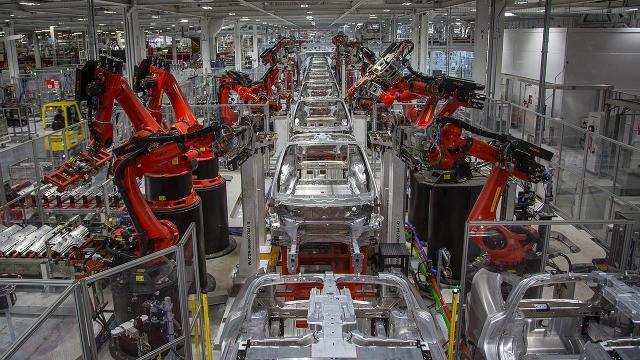

It won’t be a swift move either, it can take as much as another year before the factory is ready for another production line which leaves time for introducing the Model 2. The company always planned to add a second model to the production line in Berlin and many analysts agreed it was going to be the Model 3.Īs usual, Tesla is refusing to confirm which vehicle will be added to production at Giga Berlin.


What is interesting, is that production, and the resulting sales, were achieved with just one vehicle - Model Y. It has taken Giga Berlin 1 year to achieve 250,000 vehicles yearly capacity, from the day the production started. The factory itself will need some internal changes and of course, it will most likely need to be running 24/7 with additional workers, but the 1 million units are possible within a realistic timeframe. The 1 million EVs a year is a huge goal that will take years to achieve but it doesn’t need the Giga Berlin expanding. That plan has already changed - Tesla recently filed an environmental impact application in which it is asking the German regulators to be allowed to increase the production to 1 million vehicles per year. The initial plan for Giga Berlin was to have a capacity of 500,000 vehicles per year or 10,000 per week. It’s not time to rest on the laurels for the team though, the production ramp-up is far from over. At the same time, this is the point at which Giga Berlin becomes a profitable operation, with every vehicle over the 5,000 units mark, the factory will now bring profit. Tesla considers this number to indicate the factory achieving volume production. Workers told CNBC that GA4 is now able to produce up to 120 cars per shift, across three shifts per day, amounting to 2,160 Model 3s in a perfect six-day week, or around 30,000 per quarter. The 5,000 vehicles per week is a huge milestone for the factory and for the company. Giga Berlin hits 5k builds/week-1 year after delivering the first vehicles to customers /PZigSaSci5- Tesla March 25, 2023 Only last month we reported on Giga Berlin ramping up production to 4,000 vehicles per week and already the team is smashing 5,000 cars off the production line. After months of delays, malfunctioning assembly lines. Tesla’s original plan for Giga Berlin was to achieve this number by the end of 2022 but with global problems affecting supply chains, the factory managed to produce 3,000 vehicles per week last December. The company reached its goal of manufacturing 5,000 Model 3 cars per week during the last week of June. That brings Giga Berlin into volume production of 250,000 units of Model Y per year. The production ramp-up is accelerating and last week the magic number of 5,000 vehicles per week have been finally cracked. Food consumption is essential to our daily lives providing us with the vital. Another week - another milestone for the team at Giga Berlin. T Tesla unit of magnetic field intensity Microseconds ms.


 0 kommentar(er)
0 kommentar(er)
